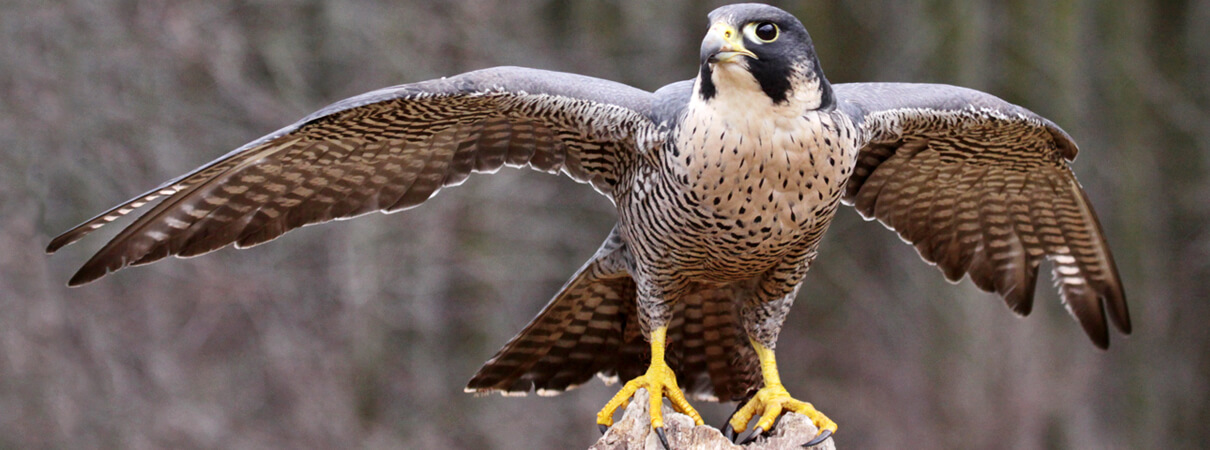Birds Need the EPA to Oversee Pesticides (and So Do We All)
Ready for a return to the Dirty Sixties? Some in Congress seem to be!
The 1960s was the decade of the Vietnam war, civil rights protests, and humankind's first steps on the moon. But it was also a decade of pollution.
Among other environmental woes, DDT—the first modern synthetic pesticide—had created a crisis for birds. Significant populations of some of America's best-loved bird species, including Bald Eagle, Brown Pelican, Peregrine Falcon, and Osprey, had suffered heavy population losses and teetered on the edge of extinction.
Onto this stage came the Environmental Protection Agency (EPA). Formed under the Nixon administration in 1970 to oversee the use of pesticides and other aspects of our environment, the agency went on to cancel most uses of DDT in 1972. Bald Eagles famously made a comeback, as did Brown Pelicans, Peregrines, and other bird species that otherwise might not be with us today.

Bald Eagle, one of the most famous beneficiaries of the EPA's work. Photo by SekarB/Shutterstock
This was just the first of several notable decisions made by the EPA that underpin the health of America's bird life today. Now, some members of Congress are threatening the very existence of the EPA, with one bill (H.R. 861), proposing “to terminate the Environmental Protection Agency.”
EPA is Vital for Birds
The case of DDT is well known. But there are lesser-known actions of the EPA that have been invaluable to bird conservation, For example, carbofuran: After research showed that a single grain could kill a songbird, most uses of the granular form of the pesticide were phased out by the EPA starting in 1991. By then carbofuran had killed millions of birds each year, from Golden Eagles to songbirds; its cancellation for use on crops in 2009 no doubt saved millions more birds.

Swainson's Hawks have bounced back, thanks to action by the EPA and influence of ABC and other groups to limit the use of monocrotophos on the species' wintering grounds. Photo by Rob McKay/Shutterstock
Then there's monocrotophos, an organophosphate pesticide now known to be acutely toxic to both birds and people. The pesticide was found to be responsible for an alarming die-off of Swainson's Hawks in Argentina in the mid-1990s; today, thanks to EPA action, monocrotophos is no longer used in the United States.
More recently, the EPA published an important finding that three common pesticides—chlorpyrifos, diazinon, and malathion—put endangered species at risk. The findings suggest that these pesticides could negatively impact virtually all species listed under the Endangered Species Act (ESA), incuding birds like Kirtland's Warbler, Piping Plover, Red Knot, and Whooping Crane, among many others. We look forward to seeing action taken based on these findings.

Whooping Crane flies today in part because the EPA has taken steps to study and limit pesticides' impact on this and other species. Photo by Kent Ellington
EPA is Not Perfect, but Alternative Far Worse
Like any large institution, the EPA is not perfect. We at ABC would like to see several advancements in the EPA's regulation of pesticides, including improved monitoring and reporting of wildlife deaths and a moratorium on the use of neonicotinoids, which are known to kill birds and bees.
However, scrapping the agency altogether, as has been proposed, would be an unprecedented setback for bird conservation and the health of our environment overall. EPA's ability to oversee the type and quantity of pesticides applied to America's landscape, and to regulate what can be released into our atmosphere and waterways, is critical to the future well-being of birds—and people as well.

Peregrine Falcon by Chris Hill, Shutterstock
H.R. 861 is just one of the moving parts in a much-larger political machine that seems determined to roll back the environmental protections that have benefited America and its wildlife for decades. We at ABC strongly oppose this bill and any similar legislation that might follow.
Our birds deserve better. Please join us in standing up for birds: Call the Capitol Switchboard at 202-224-3121 and ask your Representatives and Senators to oppose H.R. 861—or any bill that undermines the EPA's ability to protect the environment for all of us.
 Clare Nielsen is ABC's Vice President of Communications. She has been with ABC for nearly 4 years. Previously, Clare has worked in communications for Conservation International, the U.S.-Asia Environmental Partnership, C-SPAN, and other nonprofit and for-profit organizations. She holds a B.A. in English from Virginia Tech and has completed graduate-level coursework in natural history.
Clare Nielsen is ABC's Vice President of Communications. She has been with ABC for nearly 4 years. Previously, Clare has worked in communications for Conservation International, the U.S.-Asia Environmental Partnership, C-SPAN, and other nonprofit and for-profit organizations. She holds a B.A. in English from Virginia Tech and has completed graduate-level coursework in natural history.


















































